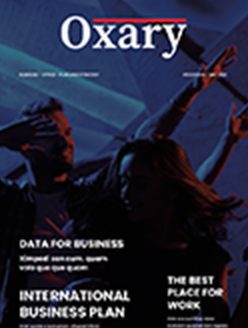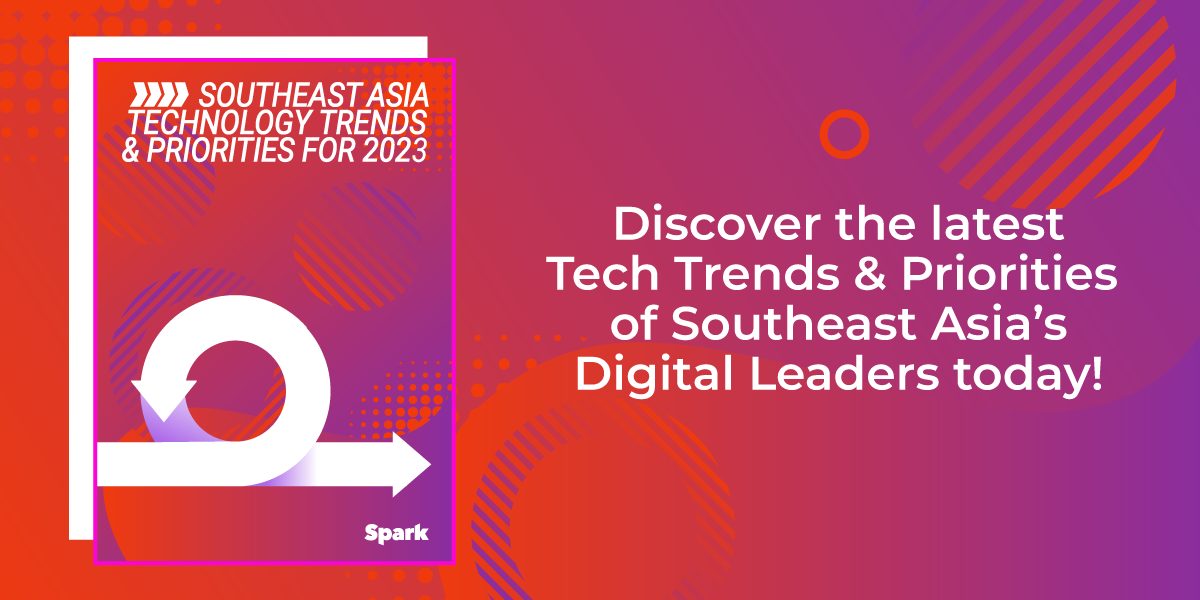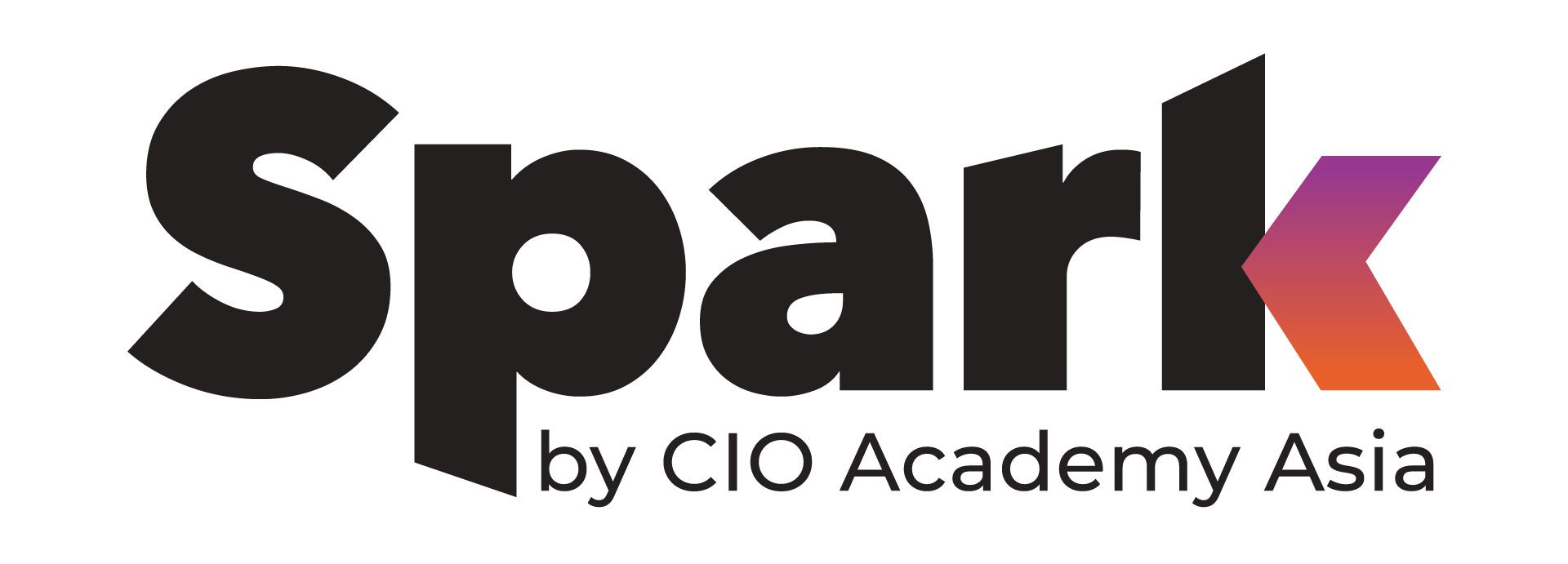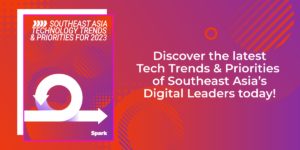[vc_row][vc_column][vc_column_text]In partnership with Fuji Xerox, ServiceNow and Veritas Technologies, CIO Academy Asia held its Thought Leadership Forum series on the topic: ‘People, Process, Technology – Transforming the Golden Triangle Using Data’, at Marina Mandarin Singapore on Tuesday, 30 April 2019. Practitioners from across industries shared their views about how data should be deployed as a strategic asset to deliver new business value.
Introduction
In his opening remarks, Koh Kok Tian, Deputy CEO, CIO Academy Asia said that while organisations focused on people, process and technology in their digital transformation journey – the ‘golden triangle’ so to speak—data was also emerging as a critical asset and could not be ignored any longer. He spoke briefly about the CIO Academy and its work in conducting leadership forums, briefings and roundtables to share ideas, awareness and best practices that could be utilised by digital practitioners around the world in a rapidly changing landscape.

Kok Tian added that while digital leaders often face challenges in trying to bridge the gap between digital transformation and business imperatives, there needn’t be any tension. He elaborated that a tech survey conducted last year among CIOs in five countries in Southeast Asia across 16 verticals revealed that data analytics had the biggest impact on businesses. This illustrated the maturity of industries that were beginning to wake up to the value of data and how it could help bridge the digital divide effectively. He also mentioned that the hybrid model—incorporating the cloud as well as on-premise architecture—is gaining favour among enterprises.
Key Takeaways: Trends Shaping the ‘Golden Triangle’
- Being able to work anywhere, anytime, and on any device, and being connected 24/7 on any device giving rise to new ways of collaborating
- The transformation in the recruitment process, with artificial Intelligence’s HR support in filtering relevant résumés for specified jobs
- Everything is centered around being data-driven
Data-driven approach to transform people, technology and process – A practitioner’s perspective
In this keynote presentation, Subramanian Venkataraman (Subra), Regional Data Officer, Asia Pacific, Deutsche Bank started out by stating emphatically that the phrase Data is the New Oil was misleading. According to him, data does not have any intrinsic value like oil does. Data extraction (unlike oil) did not cost anything or involve any effort. Refinement of oil was cheaper than the refinement of data. Also, the distribution of data (unlike oil) involved hardly any costs. So the only reason oil occupied such a powerful place in the world order was because it was scarce whereas data was growing in leaps and bounds. So there was no comparison between the two and the phrase did not hold true at all.
Subra coined a new simile. Data, to him, was like sunlight. It was an untapped resource. Clean, renewable and reusable. He talked about the two most misused terms in the digital world – ‘data-driven’ and ‘driven data’. Most people, according to Subra, are of the opinion that these two terms mean the same thing but they don’t. He explained that data-driven organisations are those entities that collect data for the sake of collecting data. There are different platforms for the collection of data and once the data is available, that drives the enterprise. Everything these organisations do, for instance launching a new product, is done using this data.
‘Driven data’ is the other side of the picture. Subra explained that at certain banks, money-related products that are offered end in transactions, so the bank receives transactional data. They have well defined structural pieces of data that are collected for a purpose. The purpose has nothing to do with the data itself. And when they have this data, they can either drive it or ignore it.
He added that for the last five decades, since the time that computers first gained prominence, data has been sidelined. With the current era of costs going down and data on the rise, one can drive the data to make a change. An outcome which is an end in itself is what ‘driven data’ means. Banks, telecommunication companies and supermarkets would be the perfect examples of organisations with driven data. Data is produced—you can either drive it or you may not.
Key takeaways
- Process – Data is not a wayside product. If you do it well, you can get more value out of it. There are a number of new processes which have become a part of the process map. Design and operational processes are data related. Some companies mine their data after they get their hands on it, while others mine [their systems] to get to the data.
- Transformation of technology – data, being what it is, keeps growing. Right from what you capture, store, secure, distribute and dispose – these are all spawning enormous new technology deployment models, which is leading to transformation of technologies themselves.
- People – A process doesn’t happen without people, technology doesn’t get done without people. As a result, new roles have evolved over just the past five years — data platform owner, data process owner, data management expert, data steward.
- Data ethics – a sunrise topic in data. It is not about people, process or technology. No one has a clear idea how to navigate this area. It is a minefield, still evolving and spawning new paradigms that did not exist in the past.
- All of this happening in ones and zeros. Imagine when the other things come up, such as neural networks, and you can start using 2s, 5s and 9s — it’s a sexy new world!
Data, the Key Value of Digital Transformation Journey
Johnson Chang, Advisory Solution Consultant, ServiceNow began his presentation with an interesting anecdote from his personal life to illustrate the point that Albert Einstein had made when he said that “information is not knowledge”, and that data without context is just organised information. According to Johnson, technology is used to capture data to help users. The data is then mined and refined before one can use it. Trusted data leads to improved decision-making which in turn leads to increased business performance.
Organisations can keep measuring their performance by asking themselves the following questions. The ease with which they answer it will be the key:
- Projects: Are my digital transformations moving the needle?
- IT Service Management: Are my operations getting more efficient?
- SecOps: What is my organisational security posture?
- Net Promoter Score: Are my end users happy?
- Infrastructure: Is the health of my configuration management database (CMDB) improving?
- How much time and how many dollars are being saved through my efforts and how does this compare to last week/month/quarter/year?
Continual service improvement aims at increasing service quality (customer satisfaction), while reducing the cost of service delivery. The service process manager can understand problems and their potential impact before they grow out of control. This would help them determine risks, impacts, or potential for outages. The frontline workers can use the triage data to reverse the flow of information and become a proactive organisation. Analysts are provided the ability to work with the data to identify root causes and opportunities and turn the spotlight on highest priority remediation tasks.
When data is used this way to help businesses drive more revenue, workers will be impacted, there will be faster resolution of problems and knowledge outflows will improve. The predictive analysis of data will help plan how to navigate in the right direction.
Johnson ended his session by speaking briefly about Fred Luddy, Founder and Chief Product Officer, ServiceNow who started the company in 2004 with a “vision to build a cloud-based platform that would enable regular people to route work effectively through an enterprise.”
Key takeaways
- Digital workflows create great experiences and unlock productivity.
- Too many platforms can be reduced to a single system of experience.
- Delivering outcomes through standard reporting, customer experience, CXO dashboards, continual improvement and governance and control.
- Continual Service Improvement aims at increasing service quality (customer satisfaction), while reducing the cost of service delivery.
- Data can be used to help businesses drive more revenue, impact workers and enable faster resolution of problems and improved knowledge outflows.
Modernising Business Workflows for a Future-Ready Data Organisation
The panel discussion, which was moderated by P. Ramakrishna (Rama), CEO, CIO Academy Asia had a diverse line-up of speakers. Participants in the panel were: Daniela Dodan, APAC Head of Search Engine Marketing, Brand Expedia; Shivani Saini, Chief Information Officer APAC, GSK Consumer Healthcare; K. Lingam, Head, Services Offering Development, Asia Pacific, Fuji Xerox and Raymond Goh, Senior Director, Systems Engineering, Veritas Technologies.
Rama began the panel noting the different voices on the stage, and the diverse group of business leaders shared how they used data in their organisations to drive business workflows.
Daniela began by giving an idea of the scale at which Expedia Group operates, with over 200+ travel booking sites, in more than 70+ countries being served, and over 600 million users coming to the sites monthly, either researching, planning or booking their journeys. She also mentioned that other than the end-user base that Expedia engages with, there is also an entire ecosystem of partners it connects with, including more than 500+ airlines, over one million properties, and other suppliers and partners. This makes Expedia Group the world’s leading online travel platform, with data management across the partner and user circles which forms a critical part of the business.
She revealed that last year, the company migrated all of its data to the cloud and this has helped them make more effective business decisions on the spot through rapid prototyping. Daniela mentioned that Expedia is not precisely a data-driven company, but a customer-centric company, and uses data to power the scalability and reach of its platforms to customers and partners.
Shivani elaborated on how the role of the CIO is changing in the new data-driven environment. She agreed with Subra’s amended definition of data being the new sunlight as it is untapped and renewable.
According to Shivani, the definition of the ‘I’ in the CIO has evolved depending on how one uses ‘insights’ to drive ‘Innovation’ and ‘Influence’ and how one ‘Inspires’. She discussed how the growth of data can provide insights to drive digital supply chains and mentioned that GSK is both data-driven as well as driven by data in some ways. The company has voluminous amount of data and will continue to leverage it to its fullest possible capacity.
She also went on to say how the entire data management process in GSK from ‘the molecule to the shelf’ is of value — from the vast amount of clinical data made available to GSK’s research and development teams to the digitisation of its supply chain to finally the sales data at storefronts. These data links will be increasingly shaped by technologies such as AI, ML and predictive analytics, according to her.
Lingam spoke about the relationship between paper and processes and how business processes impact human behaviour. He drew on the comparison between data and oil by discussing how analytics can refine the insights provided by data. Wasteful processes can be reduced by automating and enabling them. By tracking data, risk can be mitigated in organisations. Raymond spoke about the need for the utilisation of data which is where data services come in. Data insights and predictive analytics can be leveraged to improve timely services. Raymond also emphasised on the importance for any organisation to have a clear ‘intent’ and ‘outcome’ when formulating a data strategy to serve the business needs.
Key takeaways – Panel discussion
- Migrating data to the cloud has helped in making the best business decisions
- Growth of data can provide insights to drive digital supply chains
- Analytics can refine the insights provide by raw data
- Business processes can directly impact human behavior
- By tracking data, risk can be mitigated in organisations
- A dynamic IT department, data insights and predictive analytics can be leveraged to provide timely services.
Workshop: An Uncommon (and Effective) Way to Uncover Bad Processes using Data
Ho Swee Huat, Principal Consultant, Fuji Xerox, delved at length into the relationship between paper and processes and how data analytics can minimise wasteful paper-intensive business processes. He spoke about how a trillion sheets of paper printed in offices per year worldwide are trashed by the end of the day. If one can optimise devices, hold print jobs securely and have an optimal device-to-user ratio, one can optimise usage. Data analytics can provide that insight to organisations.
According to Swee Huat, improving processes isn’t always about costs. In each organisation, there are paper-intensive business processes, printing and document storage. Data can provide insights as to why employees print, share and use documents. Process analytics can be used to do a detailed study on workflows and how they can be made more efficient. Enterprises can optimise print infrastructure, secure and integrate it, uncover inefficient processes, conduct detailed workflow study and improve processes.
He pointed out that improving processes is not always about savings costs, but about simplification of the workplace in a substantial way, leading to increased flexibility and being less error-prone, and ultimately, a more controlled process of higher quality that adds value to the business.
He ended his workshop and presentation by describing the Fuji Xerox Process Assessment Study offered by his company. A Fuji Xerox Business Analyst conducts Quantitative & Qualitative Assessment in two phases to identify the manual and document intensive processes in organisations.
Key takeaways
- Data analytics can provide insights into document-intensive processes.
- Improving processes isn’t always about costs.
- Process analytics is useful in studying the different processes and minimising paper-intensive business processes.
- Optimise print infrastructure, secure and integrate, uncover inefficient processes, conduct detailed workflow study and improve processes.
[/vc_column_text][/vc_column][/vc_row]











Responses